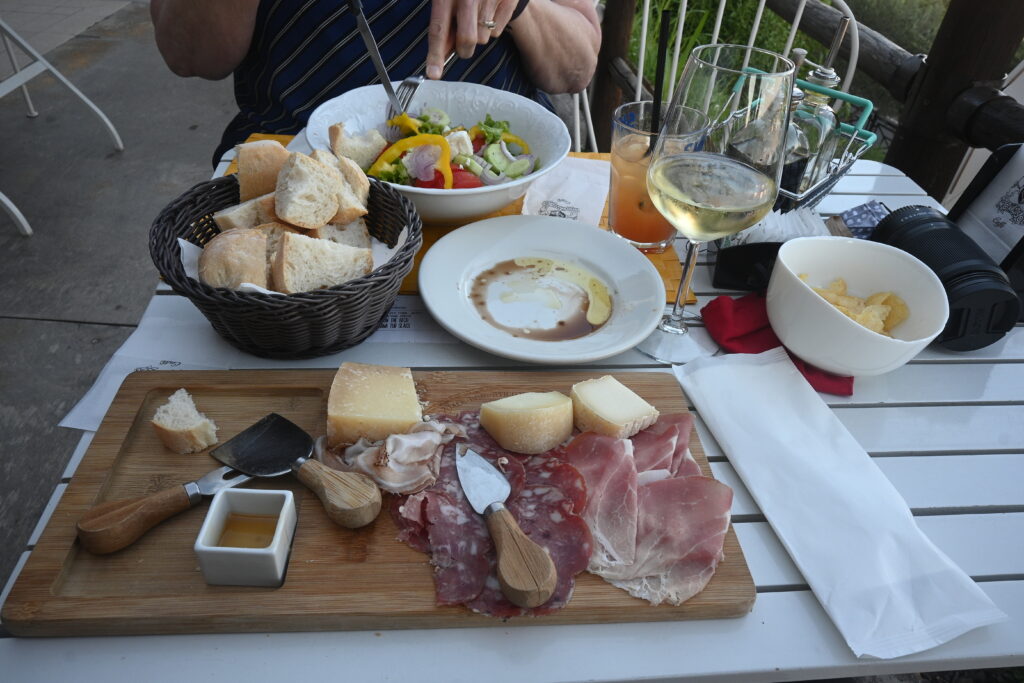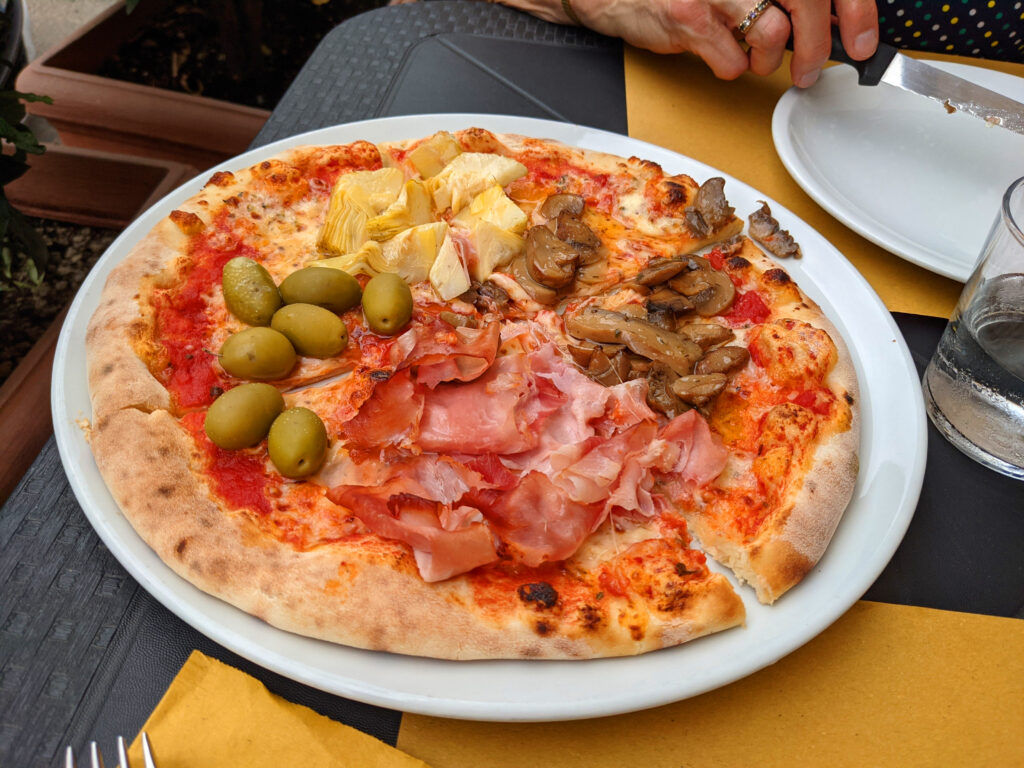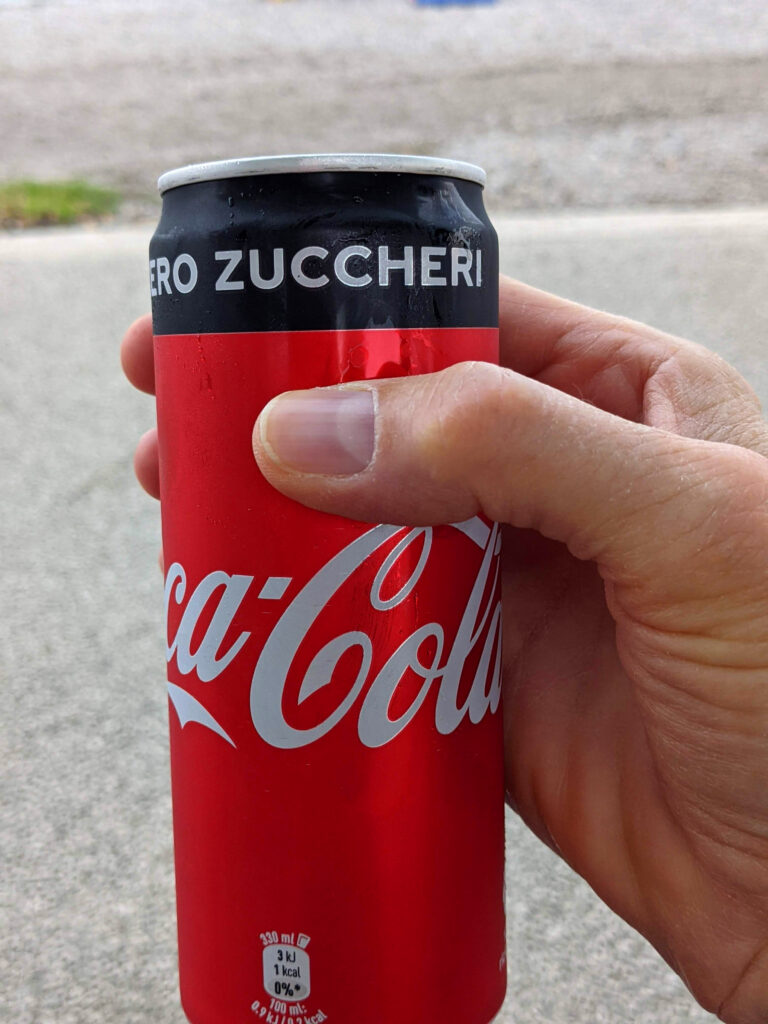By way of the broadest overview, Italy has two major food zones, north and south. Southern cuisine is driven by the sea, while northern cuisine (where we were) embraces the land. The north is perfect for raising cattle and grapes, so there are more beef dishes, alfredo sauces and butter, and less tomato sauce, fish and olive oils.
So how was our foray into northern Italian cuisine? Fantastico! Overall, it was 17 days of fine eating, varying from very good to incredible. By way of overview, here are a few quick observations:
- Except for our 4 days in the Austrian-heritage hotel in the Alps, every breakfast followed the Italian model of coffee and a croissant. Other breakfast choices were almost nowhere to be found (unless you went to McDonalds), but these could be found on every block in any direction (including McDonalds).
- Coffee was generally two choices: a very small cup of straight espresso, or a slightly larger cup (perhaps 6 oz) of cappuccino, which is a mix of espresso, milk and foam in roughly equal proportions. No flavors, and served, by American standards, lukewarm. We learned to relish drinking it with little or no added sugar.
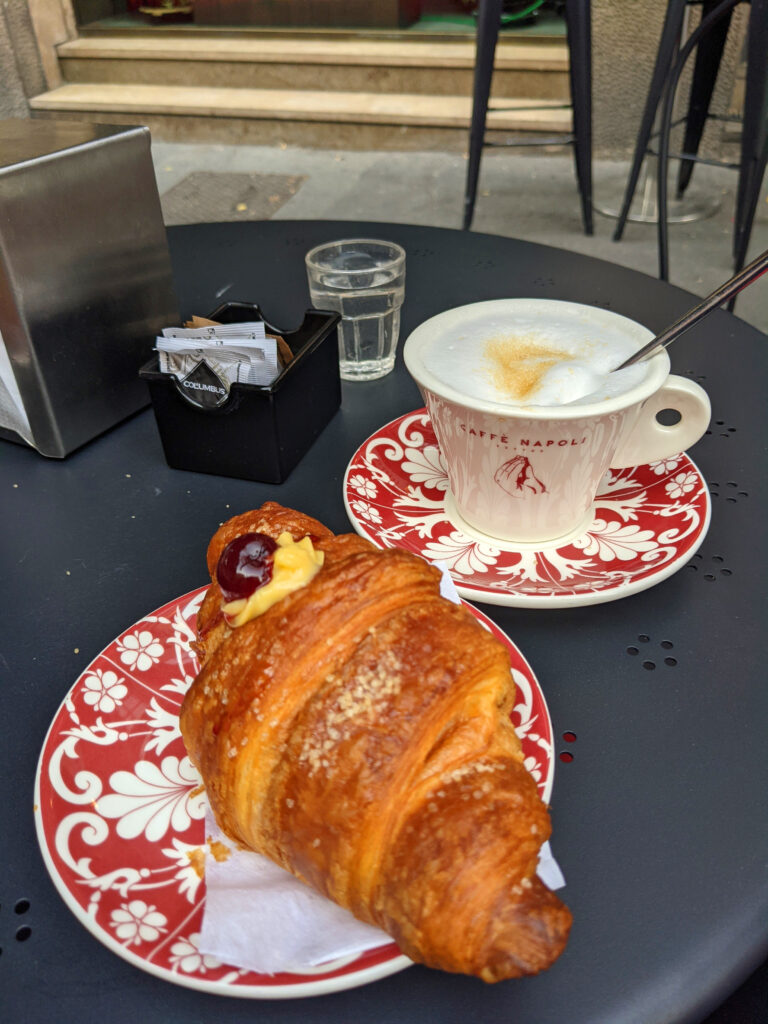
- Croissants (“brioche” when you order) are almost always filled, sometimes with jam (“marmelata”), usually apricot, or a cream filling (“crema”), not as sweet as stateside, or Nutella, Ellen’s personal favorite.
- Like Paris, eating establishments tend to be small and omnipresent. You can basically walk a couple of blocks in any direction and find one, usually with both indoor and outdoor seating. No need to search for reviews: we never found one that wasn’t delicious.
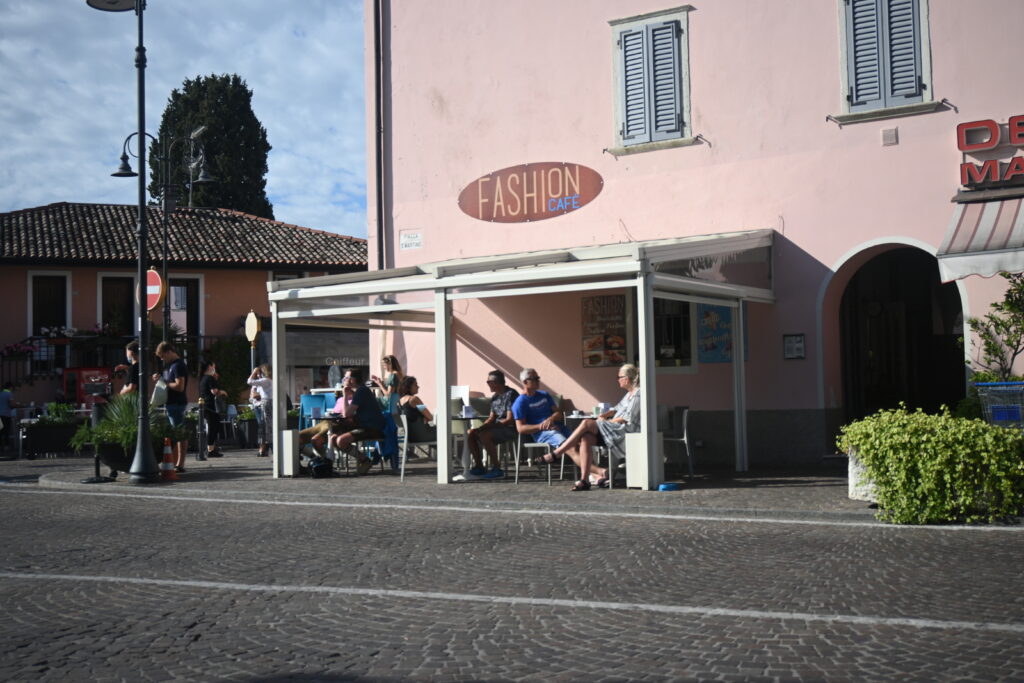
- Except for the aforementioned nice hotel, we ate every breakfast outside, as well as 2/3 of the lunches and probably at least 1/3 of the dinners. The outside venues always have some sort of umbrella covering against the elements, and the chance to observe life around us was priceless. Our favorite setting was this small outdoor place overlooking Lake Garda.

- Lunches are light affairs, generally either a small pizza or panini, which may be served as a regular sandwich or open-faced. The pizza below uses buffalo cheese, an Italian favorite soft cheese made from water buffalo milk.
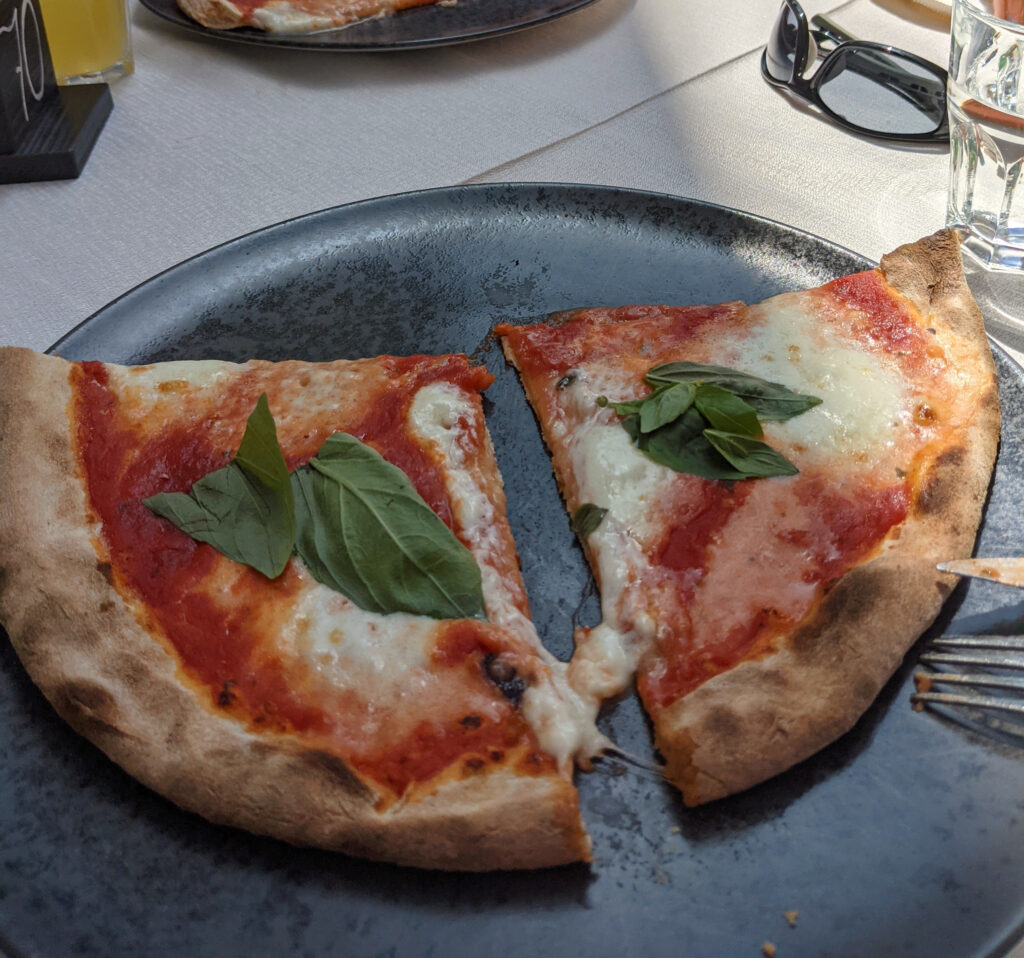
- Eating hours are a little later than those to which we are accustomed. Breakfast is generally 9, with a few shops opening at 8. Lunch is early afternoon. Dinner generally starts about 8 p.m., occasionally as early as 7.
- Unusual things included octopus, particular in appetizers. Excellent, but you have to get past the appearance.

- We didn’t have a lot of desserts, except gelato, which was good, but not as alluring as we thought it would be. We sampled several gelaterias, which were everywhere, but none stood out as exceptional.
- The best dinner was probably our anniversary dinner in Milan, because of the combination of nice setting, great food, good company, and fantastic service, despite the fact that we missed our reservation time by an hour because I bungled the transportation.
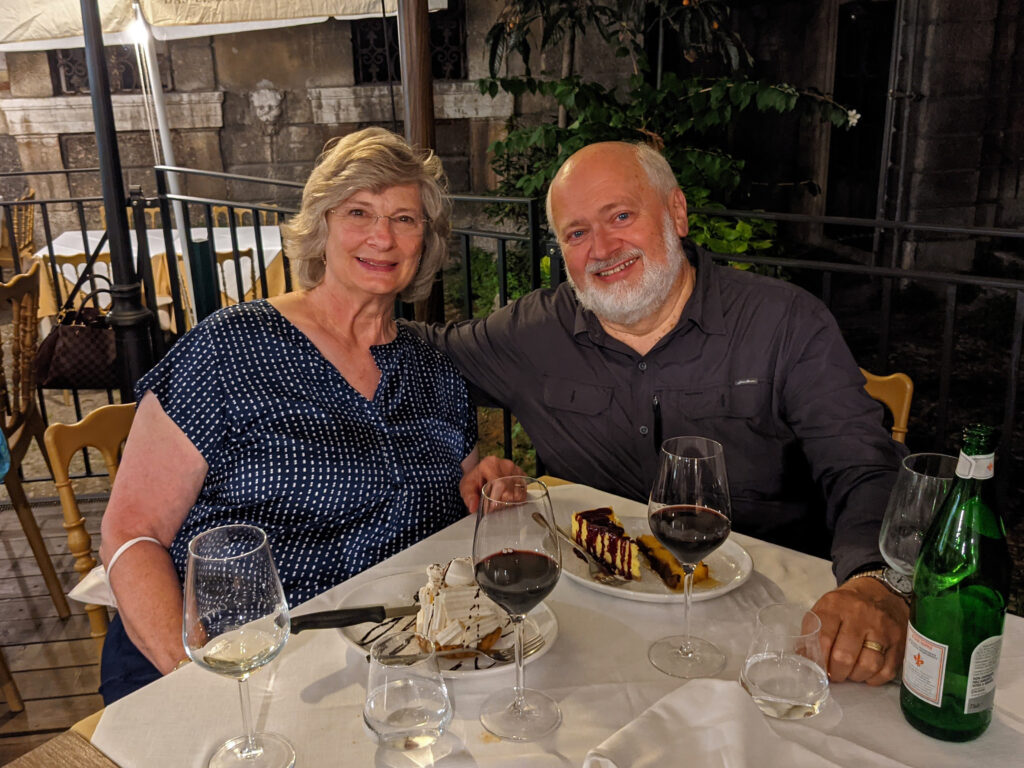
In south Tyrol (Alps) we came across speck, a new meat to us, but easier to find in Ortisei than any other kind of meat. It is pork, made from the leg of a specific type of pig. It is cured, but seasoned differently, and is quite tasty. It is vacuum-sealed, then sold unrefrigerated, as shown here.

Finally, I offer a pot pourri of other images: a dinner of prosciutto and cheeses for me and salad for Ellen; our favorite pizza from Verona (prosciutto, green olives, mushrooms, and artichokes — note how they distribute them on the pie); a pint-sized Coke zero, printed in Italian, and a surprise free condiment at the table: homemade potato chips with fresh spices sprinkled on top.
And how much weight did we gain on the trip? None. I guess the secret must be walking 5-6 miles a day. Or maybe they count calories differently in Italy. Either way, we won’t complain.
